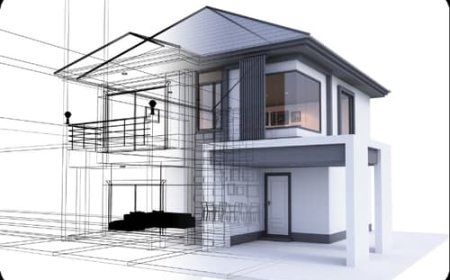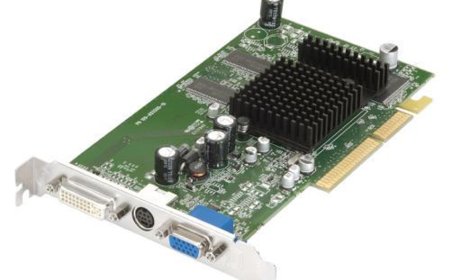How To Thrift Montana Avenue El Paso Vintage Deals
How to Thrift Montana Avenue El Paso Vintage Deals Thrifting on Montana Avenue in El Paso is more than just a shopping habit—it’s a cultural experience, a treasure hunt, and a sustainable lifestyle choice all rolled into one. Nestled in the heart of one of Texas’s most vibrant border cities, Montana Avenue offers a unique blend of local charm, historic architecture, and an eclectic mix of vintage
How to Thrift Montana Avenue El Paso Vintage Deals
Thrifting on Montana Avenue in El Paso is more than just a shopping habit—it’s a cultural experience, a treasure hunt, and a sustainable lifestyle choice all rolled into one. Nestled in the heart of one of Texas’s most vibrant border cities, Montana Avenue offers a unique blend of local charm, historic architecture, and an eclectic mix of vintage shops, thrift stores, and independent boutiques. For those seeking one-of-a-kind clothing, retro home goods, mid-century furniture, and forgotten treasures, this corridor is a goldmine. But knowing how to navigate it effectively can mean the difference between walking away with a $5 gem and missing out entirely.
This guide is designed for both newcomers and seasoned thrifter who want to master the art of finding the best vintage deals on Montana Avenue. Whether you’re drawn to 1970s denim, 1950s glassware, or hand-stitched leather jackets, this tutorial will equip you with the strategies, insights, and local knowledge to maximize your success. You’ll learn not just where to go, but when to go, how to evaluate quality, and how to build a personal thrifting routine that turns occasional visits into consistent wins. This isn’t just about saving money—it’s about connecting with history, reducing waste, and curating a personal style that stands out in a world of mass production.
Step-by-Step Guide
Research Before You Go
Before stepping foot on Montana Avenue, take 15–30 minutes to research what’s available. Start by scanning Google Maps and checking the operating hours of each store. Some thrift shops open as early as 9 a.m., while others don’t open until noon. Many close between 6 and 7 p.m., but a few stay open later on weekends. Note which stores are known for specific categories: for example, one may specialize in women’s vintage clothing, another in books and records, and a third in antique hardware and lighting.
Use social media platforms like Instagram and Facebook to search for hashtags such as
MontanaAvenueThrift, #ElPasoVintage, or #ElPasoThriftFind. Local thrifting communities often post “new arrivals” photos, restock alerts, or even sneak peeks of high-value items before they hit the floor. Join local Facebook groups like “El Paso Thrift & Vintage Swap” or “Montana Avenue Locals” to get insider tips. Someone might mention that “The Blue Door” gets a new shipment of 1980s denim every Thursday morning—information you won’t find on a website.
Plan Your Visit Around Restock Days
One of the most overlooked aspects of successful thrifting is timing. Most thrift stores receive new inventory on specific days of the week, often early in the morning. In El Paso, many shops on Montana Avenue restock on Tuesdays and Thursdays, with some adding new items on weekends after yard sales or estate liquidations. The best time to arrive is right when the store opens—usually between 9 and 10 a.m. This gives you first access to freshly sorted items before the crowds arrive.
Weekends are busier, but they also attract more sellers, meaning more variety. If you’re looking for high-end or rare items, prioritize weekdays. If you’re hunting for casual wear or decorative pieces, weekends may offer more volume. Avoid holidays and the days immediately following them—stores are often overwhelmed with donations and items may be piled haphazardly, making it harder to find quality pieces.
Know What to Look For
Not every item on the rack is worth buying. Learn to identify quality indicators. For clothing, check the fabric composition tag—natural fibers like cotton, wool, silk, and linen tend to last longer and feel better than polyester blends. Look for reinforced seams, intact zippers, and consistent stitching. Vintage garments often have labels from brands that no longer exist, such as “Calvin Klein” from the 1980s, “Levi’s 501” with red tab, or “L.L.Bean” with the original duck logo. These are indicators of authenticity and potential value.
For home goods, inspect for cracks, chips, or discoloration. Glassware should be free of cloudiness, which can indicate age-related degradation. Wooden furniture should have solid joints—test by gently wiggling legs or drawers. Avoid items with strong odors, especially mildew or smoke, which can be difficult and expensive to remove. Look for maker’s marks, signatures, or stamps on the underside of items—these can help identify the origin and era.
Start with a Clear Goal
Go in with intention. Are you looking for a specific item—a pair of 90s mom jeans, a brass floor lamp, or a vinyl record by a local El Paso band? Or are you open to discovery? If you have a goal, keep it in mind but stay flexible. Sometimes the best finds are unplanned. Create a mental checklist: “Look for denim, check the jewelry section, scan the books for first editions, peek behind the curtains for lamps.”
Divide your visit into zones. Start with the clothing racks, then move to accessories, then home goods, then books and media. Don’t rush. Spend at least 10–15 minutes in each section. Many stores organize items loosely, so items you’re seeking might be tucked away in unexpected places. A vintage coat could be hanging near the children’s section; a ceramic vase might be stacked under a pile of towels.
Inspect Every Item Thoroughly
Never assume an item is in good condition. Even if it looks clean, it may have hidden flaws. Turn clothes inside out to check for pilling, stains, or moth damage. Feel the fabric for thinning areas. Check underarm areas for yellowing, which indicates sweat damage. For shoes, flex the soles—do they crack or feel brittle? Look at the heel for uneven wear, which may indicate structural issues.
With electronics or appliances, if possible, ask to plug them in. Many thrift stores allow this if you’re serious about a purchase. Test lamps, radios, and small kitchen gadgets. If the store doesn’t allow testing, look for signs of wear: frayed cords, rusted plugs, or mismatched parts. These are red flags.
Negotiate When Appropriate
Many thrift stores on Montana Avenue operate on a flexible pricing model, especially for non-brand-name or slightly damaged items. Don’t be afraid to ask if the price is firm. A polite “Is this the best price you can do?” often opens the door to negotiation. You’re more likely to get a discount if you’re buying multiple items or if something has been in the store for over a month.
Some stores have “half-price days” on certain weekdays—typically Mondays or Wednesdays. Ask staff if they have any upcoming sales. If you see a stack of items marked “$1,” it’s often because they’re unsold for a while. These are prime opportunities. Bundle items together and say, “I’ll take these three for $5.” Most store managers would rather sell a group for a small profit than let them sit.
Use Your Phone Wisely
Keep your phone handy, but not for scrolling. Use it to photograph items you’re considering. Take a picture of a tag with the price, a close-up of a label, or the back of a piece of furniture with a maker’s mark. Later, you can search online to verify authenticity, estimate value, or find repair instructions. Apps like Google Lens or Pinterest can help identify patterns, eras, or designers.
Also, use your phone to check prices on eBay, Etsy, or Poshmark while you’re in the store. If you see a vintage blouse for $8, a quick search might reveal it’s selling for $45 elsewhere. That’s a win. If something seems overpriced, compare it. Knowledge is power.
Know When to Walk Away
Thrifting is as much about patience as it is about persistence. If you’re not finding anything after 45 minutes, take a break. Grab coffee from a nearby café, revisit later, or try a different store. Don’t force purchases. The right item will find you. Sometimes, waiting a week means a better piece arrives. Many thrifting veterans swear by the “three-visit rule”: if you haven’t found your ideal item after three trips, it’s likely not there yet—or not meant for you.
Best Practices
Build Relationships with Staff
Staff members at Montana Avenue thrift stores often know the inventory better than anyone. They see what comes in, what sells quickly, and what’s been sitting for weeks. Greet them by name. Ask questions: “Do you get a lot of donations from the downtown area?” or “What’s been the most popular category this month?”
Over time, they’ll start to set aside items they think you’d like. One regular thrifter on Montana Avenue says the owner of “Second Chance Treasures” now calls her when a new batch of 1960s scarves arrives. That kind of rapport doesn’t happen overnight—it comes from consistent, respectful visits.
Bring the Right Tools
Carry a small tote bag or reusable shopping bag. Many thrift stores don’t provide them, and you don’t want to be caught without one. Bring a small flashlight for inspecting dark corners or under shelves. A lint roller helps remove dust or pet hair from clothing before trying it on. A small notebook or phone note app is useful for jotting down store names, item descriptions, or prices you see for reference.
If you’re serious about furniture or large items, bring a measuring tape. Many vintage pieces are beautiful but won’t fit in your space. Measure doorways, hallways, and rooms beforehand so you know exactly what will work.
Wash Everything Before Use
Thrifted items, especially clothing and linens, have been handled by many people. Always wash them before wearing or using them. Use a gentle detergent and cold water. For delicate fabrics, hand wash or use a mesh laundry bag. For items with strong odors, soak in baking soda and water for a few hours before washing. Never assume something is clean just because it looks clean.
Be Mindful of Ethical Thrifting
Thrifting is a form of circular economy, but it’s not without ethical considerations. Avoid hoarding or buying items solely to resell at inflated prices, especially if you’re taking pieces that local residents rely on for affordable clothing. Be aware of cultural appropriation—some vintage items carry cultural or spiritual significance. For example, Native American patterns or religious symbols should be worn with respect and understanding.
Support stores that give back to the community. Some Montana Avenue thrift shops partner with local shelters or fund youth programs. Choosing to shop there helps sustain those efforts.
Don’t Overlook the “Junk” Section
Most thrift stores have a “junk” or “miscellaneous” corner—often near the back, filled with broken lamps, mismatched dishes, or random hardware. This is where hidden gems hide. A cracked teapot might be a $200 collectible if it’s from a famous pottery studio. A broken clock might be repairable for $15 and worth $150 after restoration. Look for materials, craftsmanship, and uniqueness. If it’s well-made, it’s worth a second look.
Keep a Personal Style Inventory
Track what you buy and what you love. Create a digital folder or Pinterest board of your thrifting finds. Note the store, the price, and why you chose it. Over time, patterns emerge. Maybe you consistently love 1970s florals, or you’re drawn to Scandinavian design. Use this to refine your search. You’ll start recognizing styles faster and become more efficient.
Rotate Your Finds
Thrifting is not just about accumulation—it’s about curation. If you buy a new vintage jacket, consider donating an old one you no longer wear. This keeps your wardrobe fresh and reduces clutter. It also creates space for new treasures. Many thrifting communities in El Paso host swap events. Participating helps you refresh your collection without spending money.
Tools and Resources
Mobile Apps for Thrifters
Several apps can enhance your thrifting experience. Poshmark and eBay help you compare prices and identify rare items. ThredUp can help you understand sizing trends across decades. Google Lens lets you take a photo of a fabric pattern or logo and instantly search for similar items or origins. Redfin and Zillow are useful if you’re hunting for vintage home items—you can search for homes from a certain era and see what decor was popular then.
Online Communities
Join local and national thrifting groups. Reddit’s r/ThriftStoreHauls and r/VintageFashion offer inspiration and identification help. Facebook groups like “Vintage Clothing Enthusiasts of Texas” and “El Paso Thrift & Resale Network” are active and full of tips. Instagram accounts like @elpasovintagefinds and @montanaavenuethrift regularly post new arrivals and behind-the-scenes content.
Books and Guides
Invest in a few reference books. “The Vintage Guide to Clothing: A Visual Encyclopedia of Fashion from 1840 to 1990” by Elizabeth Wilson helps identify eras by silhouette and fabric. “The Complete Guide to Vintage Home Decor” by Susan L. Ehrlich teaches how to date furniture, lighting, and ceramics. These aren’t just for collectors—they’re practical tools for recognizing value.
Local Historical Societies
The El Paso Historical Society and the El Paso Museum of Art occasionally host talks on local fashion and design history. These events often reveal which local designers or manufacturers were active in the mid-20th century. Knowing that “El Paso Made” labels were common on textiles from the 1940s–60s can help you identify locally significant pieces.
Price Guides and Databases
Use WorthPoint or Collectors Weekly to look up specific items. If you find a porcelain figurine with a small stamp, you can search the mark and find its origin, age, and approximate value. These sites require subscriptions, but many public libraries offer free access.
Local Events and Markets
Montana Avenue isn’t just about permanent stores. Check out monthly events like the “El Paso Vintage Market” held at the El Paso Community College courtyard, or the “Borderland Flea” on the third Saturday of each month. These events bring together dealers from across the region and often feature rare, curated collections you won’t find in regular stores.
Real Examples
Example 1: The $3 Velvet Blazer That Sold for $180
In early 2023, a thrifter named Maria visited “Retro Haven” on Montana Avenue on a rainy Tuesday morning. She noticed a dark green velvet blazer hanging behind a stack of sweaters. The label read “Dior Paris” with a 1983 date. The price tag said $3. She took a photo and later searched the label online. The blazer was from Dior’s diffusion line, produced for the U.S. market in the early 80s. It was in excellent condition—no stains, intact lining, original buttons. She sold it on Etsy for $180 two weeks later. Her profit? $177.
Example 2: The $1 Brass Lamp That Lit Up a Living Room
Carlos found a brass floor lamp in the “junk” section of “The Attic Thrift” for $1. It was missing its shade and had a frayed cord. He took it home, cleaned the brass with vinegar and salt, rewired it for $12, and bought a replacement shade from a local artisan for $25. The finished lamp now sells for $220 on Facebook Marketplace. His total investment: $38. He keeps the lamp for himself.
Example 3: The 1968 Vinyl Record That Started a Collection
Jessica stumbled upon a dusty copy of “The Doors – L.A. Woman” at “Record & Relic” on a Saturday afternoon. The sleeve was worn, but the record looked unplayed. The price was $5. She played it on her turntable—it was flawless. She later learned it was a first pressing with the original “Doors” logo, not the later reissue. It’s now worth $150. That $5 purchase sparked her passion for collecting vinyl, and she now has over 200 records, mostly from Montana Avenue stores.
Example 4: The 1950s Kitchenware Set That Became a Business
After finding a set of 12 matching Fiestaware plates for $10 at “Second Chance Treasures,” a thrifter named Luis started collecting vintage kitchenware. He began posting photos on Instagram, tagging
ElPasoVintageKitchen. Within months, he had 5,000 followers. He now runs a small online shop selling curated sets from Montana Avenue finds, charging $45–$80 per set. His annual revenue: over $25,000.
Example 5: The Forgotten Suit That Got a Wedding Proposal
A man named Daniel found a 1947 wool herringbone suit at “Montana Vintage Threads” for $22. He had it tailored and wore it to propose to his girlfriend. She cried—not just because of the ring, but because the suit reminded her of her grandfather’s. He later donated the ring box to the store as a thank-you gift. It’s now displayed in their “Heartfelt Finds” corner.
FAQs
What’s the best day to thrift on Montana Avenue?
Tuesdays and Thursdays are generally the best days for new inventory. Stores restock after weekend donations, and items are freshly sorted. Early morning (9–10 a.m.) gives you the first pick.
Are there any thrift stores on Montana Avenue that specialize in high-end vintage?
Yes. “The Velvet Vault” and “Montana Vintage Threads” focus on designer pieces from the 1960s–1990s. You’ll find labels like Chanel, Yves Saint Laurent, and Gucci. Prices range from $20 to $300, depending on condition and rarity.
Can I return items if I change my mind?
Most thrift stores on Montana Avenue have a strict no-return policy. Always inspect items thoroughly before purchasing. Some stores offer exchanges within 48 hours if the item is unworn and has the original tag.
How do I know if a vintage item is authentic?
Look for labels, stitching patterns, fabric types, and manufacturing details. Compare with online databases or consult vintage fashion forums. For furniture, check for hand-cut joints, tool marks, and wear consistent with age. Fake antiques often have uniform wear or modern screws.
Is thrifting on Montana Avenue safe?
Yes. The area is well-trafficked, especially during business hours. Stick to established stores, avoid isolated alleys, and be aware of your surroundings. Most shops are family-run and community-oriented.
What should I do if I find something valuable?
Take a photo and research it before leaving the store. If you’re unsure, ask the staff—they may recognize it. Don’t assume it’s worthless. Many valuable items are priced low because the seller doesn’t know their significance.
Can I sell my own items to Montana Avenue thrift stores?
Most stores accept donations. Some offer store credit in exchange. Call ahead to ask what they’re accepting. Avoid bringing damaged, stained, or incomplete items—they’re often declined.
Are there any thrift stores that accept credit cards?
Most do now. However, some smaller shops still operate cash-only. Always carry some cash, especially for lower-priced items or if you’re negotiating.
How can I avoid buying fake vintage items?
Learn the hallmarks of genuine vintage: hand-stitched seams, metal zippers (pre-1970), printed labels (not heat transfers), and natural fibers. Research the brand’s history. If a “1950s Chanel” has a plastic zipper and a barcode, it’s likely a reproduction.
What’s the most common mistake new thrifter make?
Buying too much too soon. Thrifting is a marathon, not a sprint. Focus on quality over quantity. One perfect piece is better than five mediocre ones.
Conclusion
Thrifting on Montana Avenue in El Paso is not just a way to find affordable, unique items—it’s a gateway to history, creativity, and community. Each garment, each piece of glass, each record tells a story. By approaching thrifting with intention, patience, and respect, you transform a simple outing into a meaningful ritual. The real value isn’t just in the price tag—it’s in the discovery, the connection, and the quiet joy of finding something that feels like it was made just for you.
Use this guide as your map, but let your curiosity be your compass. Return often. Talk to the staff. Look beyond the obvious. Be willing to dig, to wait, to learn. The next treasure you find might be the one that changes your style, your home, or even your perspective.
Montana Avenue doesn’t give up its secrets easily. But for those who show up, look closely, and listen carefully—it rewards them in ways no mall ever could.

















































